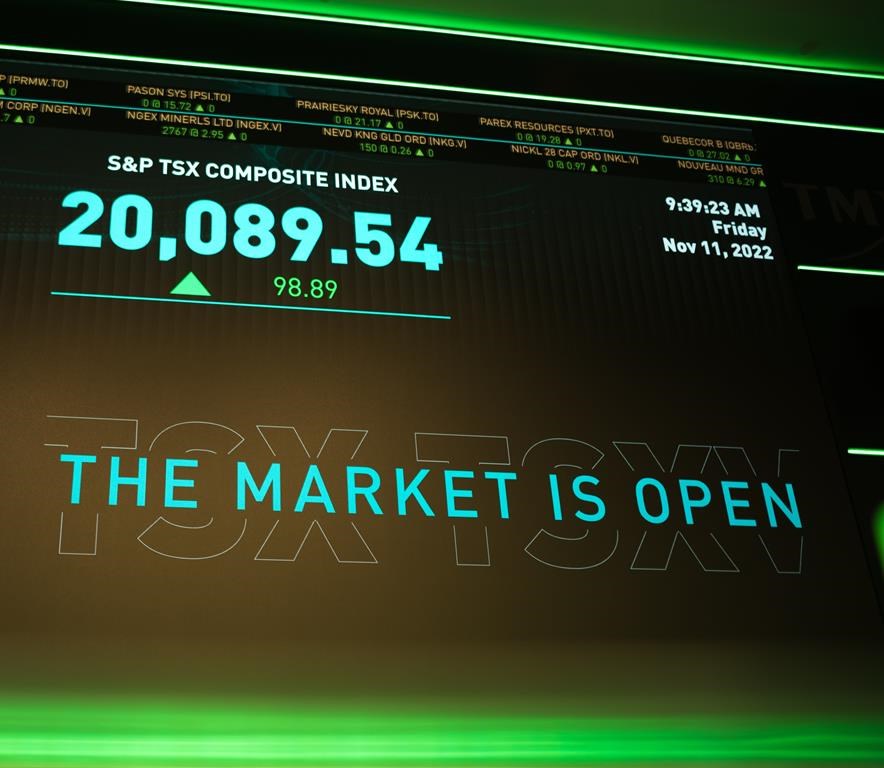Canada’s main stock index closed down almost 100 points Thursday despite strength in energy stocks, while U.S. markets also moved lower a day after rating agency Fitch downgraded the U.S. government’s credit rating from AAA to AA+.

Investors will get more economic data Friday when both Canada and the U.S. release their latest reports on employment.
“It’s a pretty big day tomorrow,” said Hadiza Djataou, VP and portfolio manager of global bonds at Mackenzie Investments.
Investors saw economic data trickle in on Thursday, with a report showing that unemployment applications rose last week but remained relatively low, while a pair of reports showed signs of slowing in the services sector.
The S&P/TSX composite index closed down 97.47 points at 20,120.74.
In New York, the Dow Jones industrial average was down 66.63 points at 35,215.89. The S&P 500 index was down 11.50 points at 4,501.89,while the Nasdaq composite was down 13.73 points at 13,959.71.
Over the past month, investors have been collectively celebrating the fact that inflation has dipped within the target range for central banks, said Djataou.
“The big question is, where do we go from here?” she said.
The easy part for central banks is done, said Djataou, but that doesn’t mean the fight is over.
- ‘We’re rich’: Couple now millionaires after playing same lotto numbers for 38 years
- Housing affordability just improved in Canada – mostly in these expensive cities
- Loblaw agrees to sign grocery code of conduct. Why it took so long
- Heading out for the May long weekend? Here’s what to expect for gas prices
If the central banks’ target is really to get inflation back to two per cent, the question is how high rates need to be in order to achieve that target, she said. Adding to the difficulty are the fact that some of the things keeping inflation elevated, like oil prices, are outside the reach of the central banks.
Both the Bank of Canada and the Federal Reserve are set to make their next interest rate decisions in September. Regardless of whether they hike or hold, officials won’t want to get too specific in their messaging, said Djataou, preferring to leave the door open for hikes while also not stoking hopes of cuts anytime soon.
“The minute they say, `We’re done,’ the market is going to start pricing rate cuts,” she said _ and that’s not what the central bank wants.
The consumer has been holding in well so far, said Djataou, particularly in the U.S. where consumers are less sensitive to interest rate hikes.
The price of oil continued its climb north of US$80 Thursday after taking a breather the day before. However, though it’s moved higher in recent weeks, it’s still softer than the highs of 2022. Djataou thinks oil will continue to react to weaker global demand despite supply cuts from the likes of OPEC plus.
“Despite that news, you still see weaknesses in oil. And I think the weakness in oil is also factoring in a potential slowdown,” she said.
The Canadian dollar traded for 74.90 cents UScompared with 74.99 cents US on Wednesday.
The September crude oil contract was up US$2.06 at US$81.55 per barreland the September natural gas contract was up nine cents at US$2.57 per mmBTU.
The December gold contract was down US$6.20 at US$1,968.80 an ounce and the September copper contract was up six cents at US$3.90 a pound.



Comments